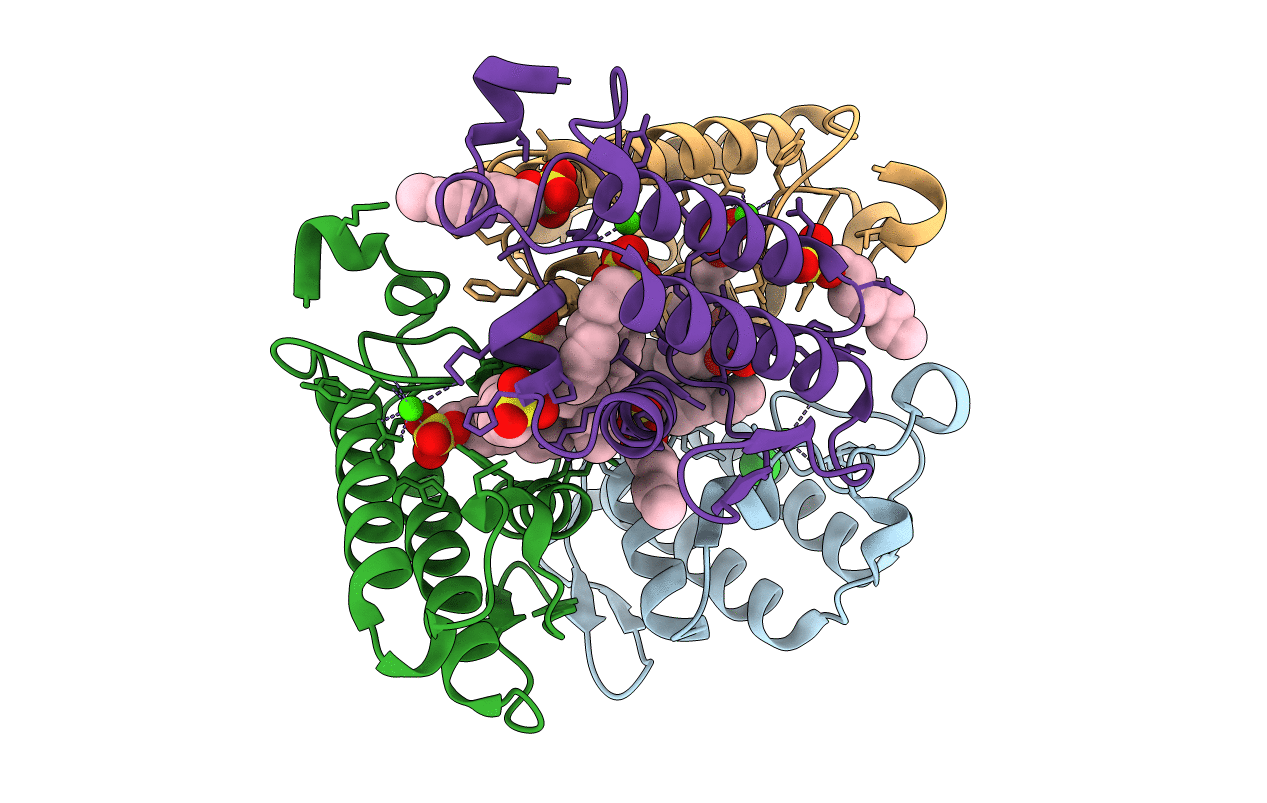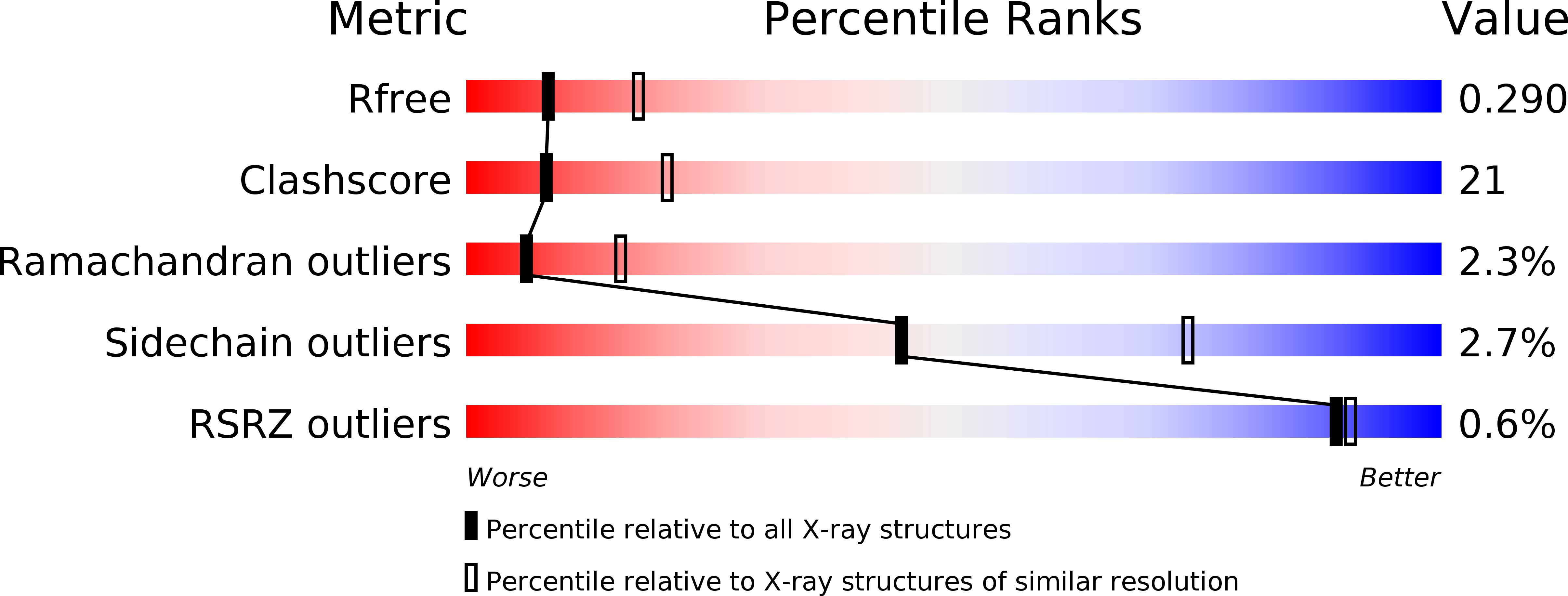
Deposition Date
2009-01-15
Release Date
2010-03-16
Last Version Date
2024-11-20
Entry Detail
PDB ID:
3FVI
Keywords:
Title:
Crystal Structure of Complex of Phospholipase A2 with Octyl Sulfates
Biological Source:
Source Organism:
Sus scrofa (Taxon ID: 9823)
Host Organism:
Method Details:
Experimental Method:
Resolution:
2.70 Å
R-Value Free:
0.27
R-Value Work:
0.20
R-Value Observed:
0.20
Space Group:
P 21 21 21


